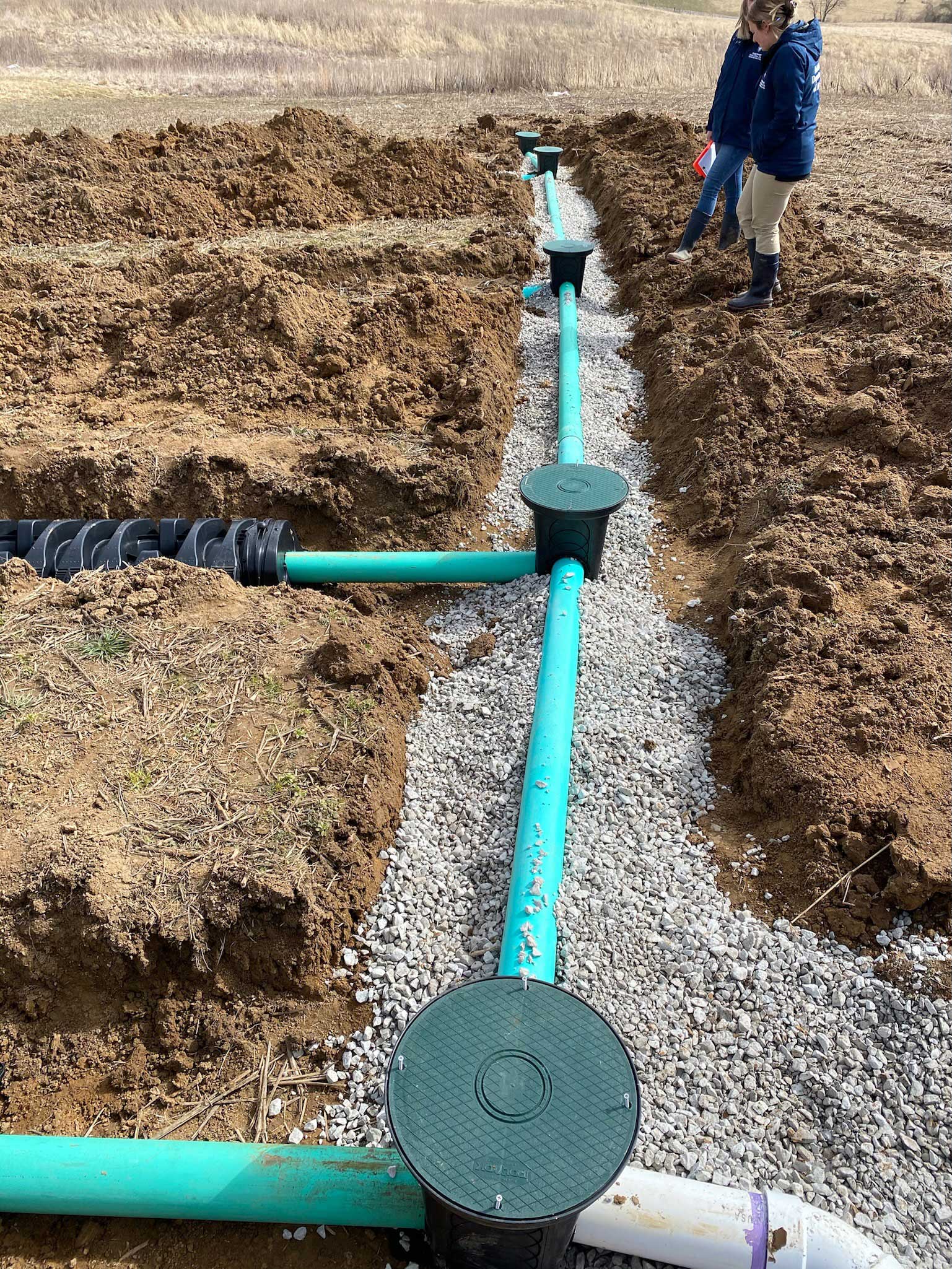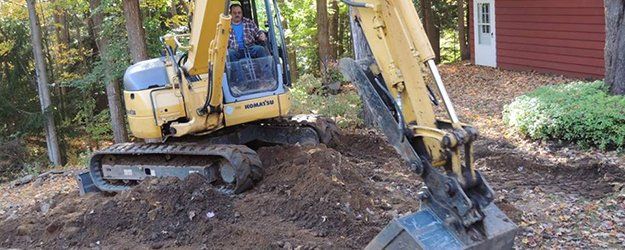Business Lancaster Trenching - Trenching Services for Businesses in Lancaster
Business Lancaster Trenching - Trenching Services for Businesses in Lancaster
Blog Article
Revealing the Art of Excavation: Pro Tips for Safe and Effective Excavating
In the world of excavation, the mastery of safe and effective excavating is an art form that needs adherence, understanding, and accuracy to established methods. As soil is transformed and earth is relocated, the intricacies of excavation expose themselves, requiring an eager understanding of devices, dirt composition, security protocols, and ecological factors to consider. The expertise required to browse these elements successfully can suggest the distinction between a successful excavation job and a potential disaster. By untangling the layers of this intricate process, a globe of understandings and approaches awaits those looking for to elevate their excavation abilities to brand-new elevations.
Relevance of Correct Tools
To guarantee the safety and security and performance of any type of excavation project, using the appropriate tools is paramount. Excavation projects vary in range and complexity, varying from tiny property landscape design tasks to large building and construction endeavors.
Excavators are essential pieces of equipment in any digging procedure. These versatile machines come in numerous sizes to suit different task requirements. Small excavators are optimal for smaller sized tasks, while bigger excavators tackle much more extensive projects efficiently. Backhoes are an additional important devices type, incorporating the functions of a loader and an excavator in one equipment. They are important for jobs calling for versatility and ability to move.
Excavators excel in tasks that call for pushing large quantities of soil or debris. By investing in the proper devices, excavation projects can be finished safely, on time, and with precision.
Recognizing Dirt Make-up
A comprehensive grasp of dirt structure is fundamental for carrying out excavation tasks with precision and safety. Recognizing the different kinds of soil is critical as it directly affects excavation approaches, equipment choice, and total task efficiency. Soil make-up typically contains four primary components: sand, silt, clay, and raw material. Each element has unique properties that influence how soil reacts to excavation processes.
Sand bits are the largest and supply great drain yet offer little cohesion. Silt particles are smaller than sand however larger than clay, offering modest water drainage and communication. Clay bits are the smallest and provide high communication but inadequate drain. Raw material, such as decaying plant material, impacts soil fertility and stability.
Before commencing excavation, conducting dirt examinations to determine its structure and qualities is important. This details helps in choosing the appropriate devices, carrying out safety and security steps, and creating excavation techniques tailored to the details soil conditions - lancaster trenching. By comprehending soil composition, excavation professionals can boost task results while making sure security and adherence to ideal practices
Precaution and Methods
Recognizing dirt composition is the cornerstone whereupon precaution and procedures for excavation tasks are constructed, making sure the well-being of employees and the success of the endeavor. There are several vital actions that need to be carried out to reduce threats and protect against mishaps. when it comes to safety and security throughout excavation.
Most importantly, before any kind of excavating begins, a comprehensive examination of the site should be carried out to identify any potential hazards such as underground energies, unsteady dirt problems, or close-by frameworks that could present a risk. It is critical to have a competent individual manage the excavation procedure to guarantee that all security methods are followed strictly.
Furthermore, all workers involved in the excavation needs to be appropriately educated in risk-free excavating practices and the correct operation of equipment. By adhering to these security actions and procedures, excavation jobs can be finished successfully and without incident.
Efficient Excavation Preparation
When beginning on an excavation job, thorough planning is important to ensure efficiency, security, and successful end results. Efficient excavation planning includes numerous crucial steps that are critical for the smooth execution of the task.
When the website evaluation is complete, the following action is to develop a clear timeline and routine for the excavation activities. This consists of identifying the series of tasks, devices requirements, and manpower appropriation. Proper organizing helps prevent hold-ups and guarantees that the job remains on track.

Additionally, communication among all employee is extremely important Extra resources throughout the preparation phase. Clear regulations, normal updates, and efficient sychronisation are crucial for an effective excavation job. By investing time and effort in meticulous go to my site preparation, excavation groups can considerably enhance performance, lessen risks, and achieve successful results.

Handling Environmental Factors To Consider
With raising emphasis on environmental sustainability in building techniques, handling ecological considerations has actually ended up being an important element of excavation jobs. Excavation activities have the potential to influence the surrounding setting via dirt erosion, sediment runoff, environment disturbance, and contamination of water sources. To mitigate these risks, it is vital to carry out best methods that focus on ecological security.

Additionally, appropriate waste administration is essential to prevent soil and water contamination. Executing treatments for the disposal of harmful materials, recycling of waste products, and decreasing the usage of dangerous chemicals can substantially reduce the environmental impact of excavation jobs. By find integrating these techniques right into excavation preparation and implementation, building and construction companies can make sure that their jobs are not just secure and productive but likewise environmentally accountable.
Verdict
In conclusion, grasping the art of excavation requires a detailed understanding of appropriate tools, dirt make-up, safety measures, and efficient preparation. By adhering to these guidelines and thinking about ecological factors, excavations can be carried out securely and effectively. It is vital to prioritize safety and productivity in every digging task to make sure effective results.
As soil is turned and earth is moved, the ins and outs of excavation reveal themselves, requiring an eager understanding of equipment, soil structure, safety and security methods, and ecological factors to consider.To make certain the safety and performance of any kind of excavation job, utilizing the ideal equipment is paramount.A comprehensive grasp of dirt structure is essential for implementing excavation jobs with accuracy and security. Understanding the various types of soil is critical as it straight impacts excavation techniques, equipment choice, and overall task effectiveness. By understanding soil composition, excavation professionals can improve project results while ensuring safety and security and adherence to ideal methods.
Report this page